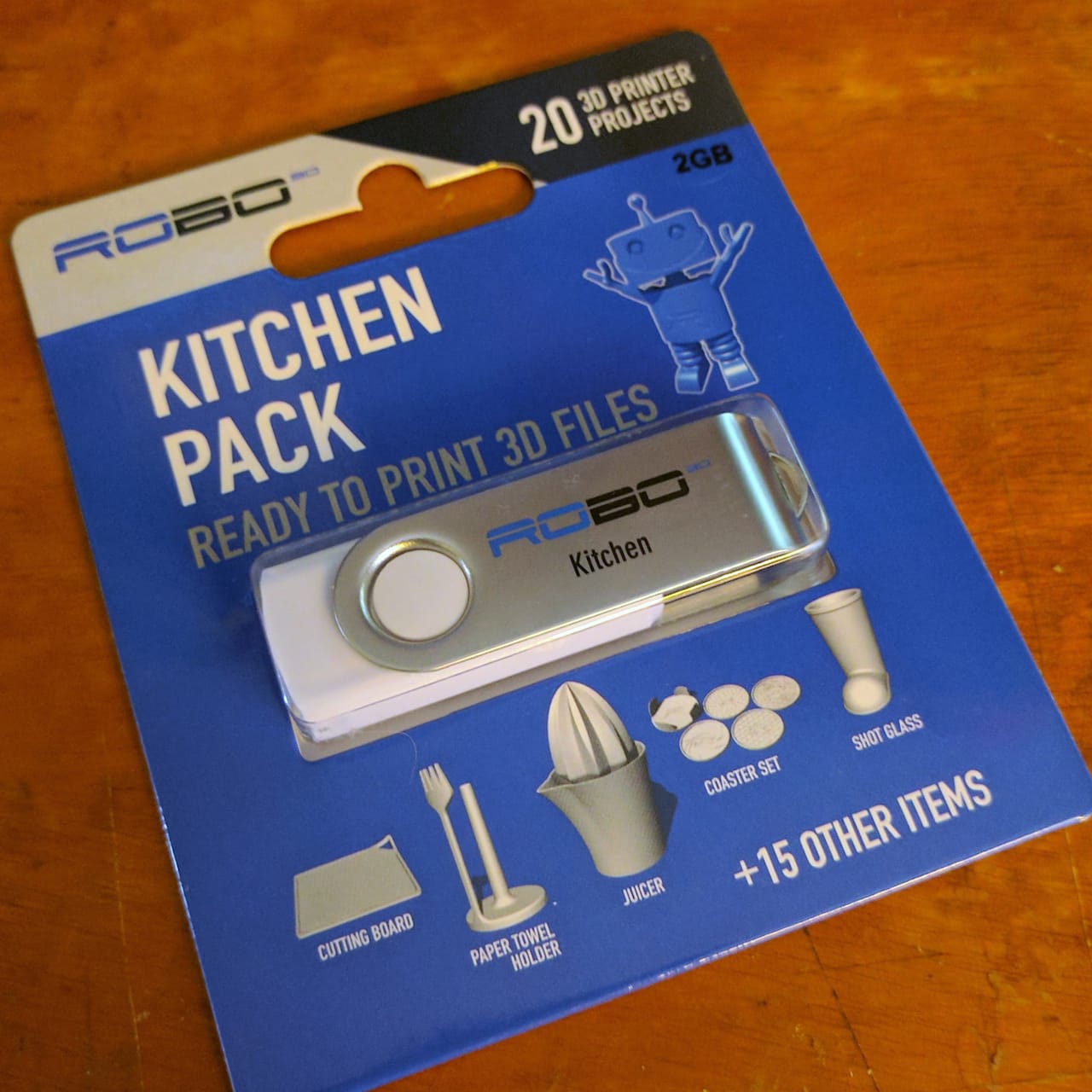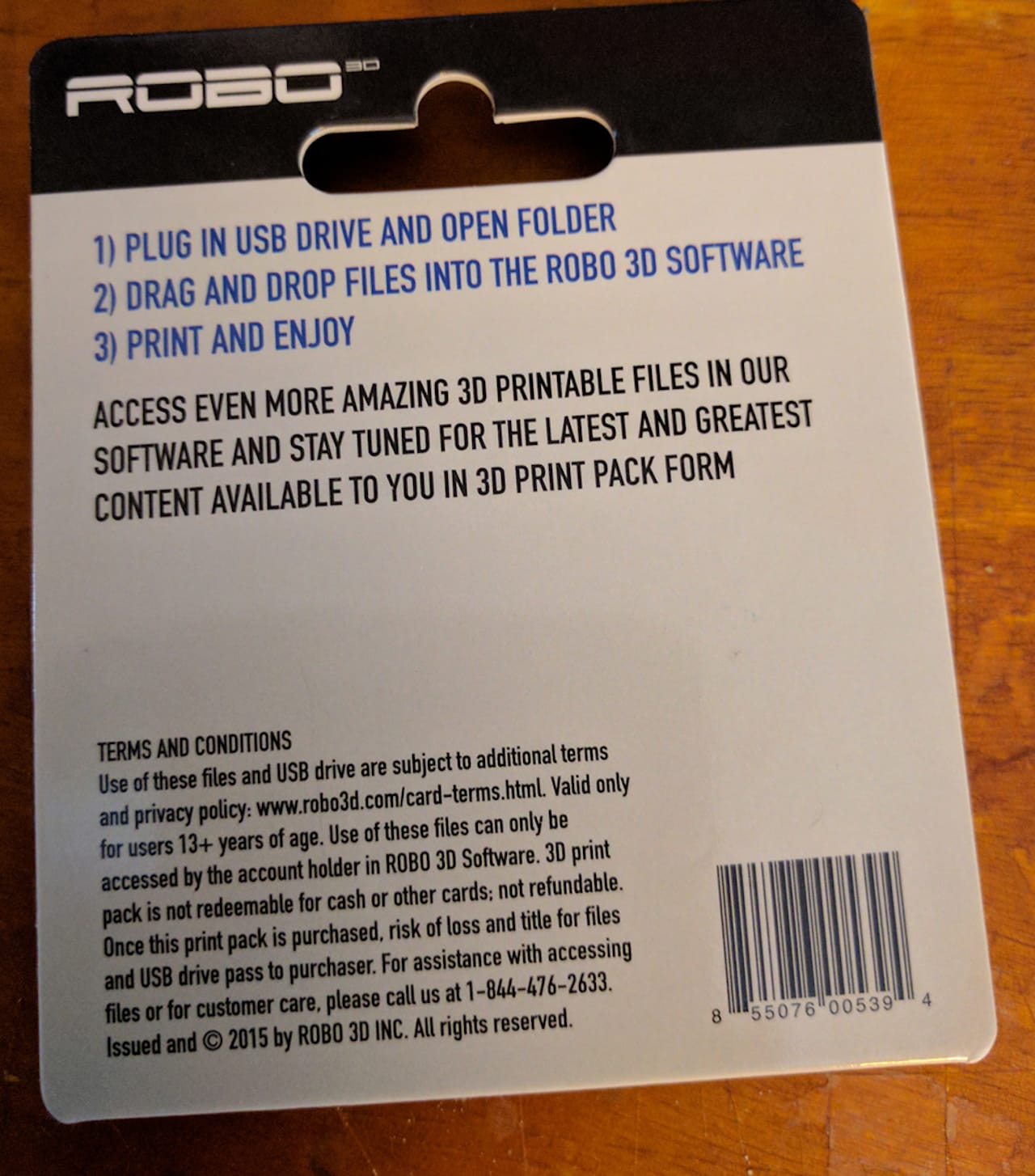
A very interesting report at Hackaday describes a very unusual product from Robo (formerly Robo 3D).
Robo markets a line of well-regarded desktop 3D printers and, like several other manufacturers, has struck a deal with Staples for them to distribute Robo’s products at their online and physical stores.
There was once a day when seeing a 3D printer in an office supply shop was a novelty, but those days are long gone. Today you can often find several brands and all their accessories, repair parts and materials, usually online, but often in physical form, too.
The Hackaday report, written by Brian Benchoff, describes how he stumbled into his local Staples seeking some cheap filament to complete a project. He says:
Last weekend, I picked up a 1kg spool of red PLA for $40. What I found next to this filament left me shocked, confused, and insatiably curious. I walked out of that store with a spool of filament and a USB thumb drive loaded up with twenty-five STL files. This, apparently, is the future of 3D printing.
What? You buy a 3D printer, and then you buy a physical copy of STL files so that you can produce common kitchen items with the printer? Apparently so, for USD$19.99.
Benchoff, like myself, is very skeptical of this approach, feeling that someone operating a 3D printer would well be capable of finding the exact same 3D models online from any number of 3D model repositories. However:
While the utility of these objects are questionable, I must add they are at least unique. I spent several hours trolling Thingiverse and Yeggi to find these models. With the exception of a drink coaster set, and the table top football playset found on the packaging for the ‘office pack’ thumb drive, I can’t find any of these models online. They are, apparently, unique and most likely designed by Robo3D.
So it appears that Robo custom produced a themed set of prints for their (or any) 3D printer. I do have a problem with the particular theme here, as some of these “kitchen” objects are more than likely going to come in contact with food, if they are indeed printed and installed in your kitchen.
There is no guarantee that the 3D printer operator would use food safe filament nor a food safe 3D printer. I am pretty sure that the Robo 3D printers are not yet certified as food safe. Even if they were, there is still the problem of porosity of 3D prints, where bacteria and toxins can be stuck in the cracks, making it impossible to safely clean.
The back of the package appears like this:

Note that it says, “Stay tuned for the latest and greatest content available to you in print pack form”. Apparently there was an intention to do more of these “print packs”. But Benchoff discovered the links to the online files were dead, so perhaps this approach has been abandoned by Robo.
Will people buy 3D models in this way? It certainly seems to be a unique distribution method, as literally all the 3D models I have experienced have been digitally distributed. Back to physical, I suppose.
But really, this is likely a worthy experiment by Robo to try to break through the “content barrier” that’s holding up consumer 3D printing. It may not have worked, but I am pleased they made an attempt. Someone will eventually figure out how to do this in a way that people want to use.
Via Hackaday

